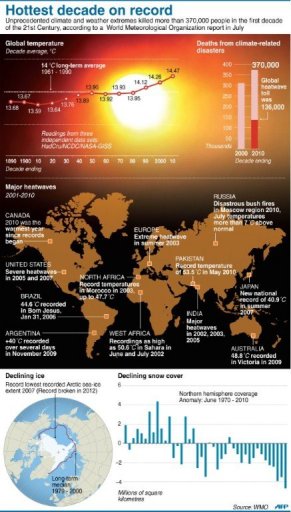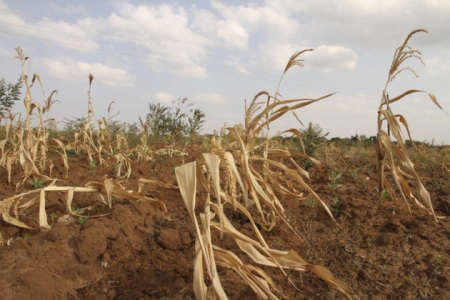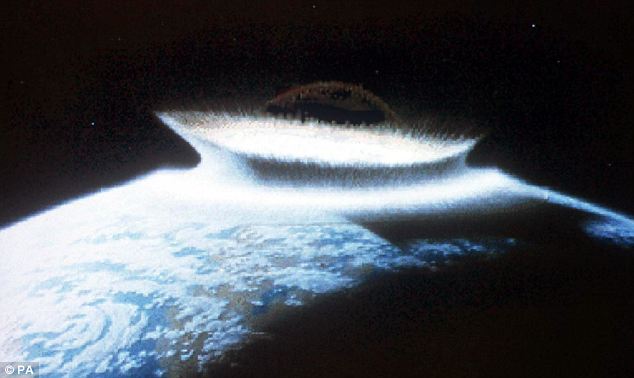You cannot get away from climate change news and views today. Almost every day we see new information published with most of it forecasting a dimmer future. In some cases we are asked to learn about lessons from past geological events that shake our steadfast confidence in an Earth that is basically stable and predictable. I share with you a smattering of news and views from the last week.
Pests Make Polar Migration as our Atmosphere Warms
I’m not talking about your kid sister or brother. The type of pests that are moving towards the poles as much as 7 kilometer (4.5 miles) per year are ones that can seriously impact crop production. This rate of movement is being observed particularly in fungi. For other species like mites, moths and beetles the rate of polar migration is on average about 2.7 kilometers (1.7 miles) per year.
The reason scientists give is global warming. The scientists point to fungi like Phytophthora infestans. If you are not familiar with this pest, it is the one blamed for the great potato famine that struck Ireland in the 19th century. The results of the study appear in this month’s Nature Climate Change.
IPCC to Release Fifth Assessment Report on Climate Change
The United Nations’ Intergovernmental Panel on Climate Change compiles and assesses the existing scientific evidence about global warming and provides us with conclusions and suggestions for long-term solutions. We are being prepared for AR5, the five standing for the fifth iteration of this report, which will be released in phases between now (September, 2013) and the fall of 2014.
One of the ongoing challenges that climate scientists face is the unpredictable nature of local climate. When you predict that temperatures in the 21st century are overall going to rise on average 2 to 5 Celsius (3.8 to 9 Fahrenheit) degrees, how does that relate to what we experience locally. For example although North America has experienced in the last decade on average the warmest summers since climate data was first collected, here in Toronto we have had very little in the way of a heat wave and instead have experienced more than average rainfall, some of it torrential.
You see what the IPCC can tell us bears no relationship to the local flooding we faced in Toronto in July when more rain fell in one hour than in the entire preceding month. So there is an air of unreality to IPCC forecasts because climate models fail to predict specific local conditions over short periods of time.
And yet we know that the IPCC next report is going to tell us that we are continuing to see general warming correlated to greenhouse gas we humans are contributing to the Earth’s atmosphere and oceans. But the uncertainty remains the escape hatch for climate change deniers who point to summers like we have had here in Toronto and say, “climate change ain’t happening. Just look at our summer, cooler, rainier…global warming, who are you kidding?”
Planet Cooling in our Recent Past – Was an Asteroid Impact the Reason?
About 12,900 years ago, a geological blink of the eye, scientists know from ice cores and other evidence that the Earth went through a 1,300 year cold snap. Considering that I get cabin fever when we get a cold snap that lasts a few days in the winter here in Toronto, 1,300 years seems a bit ridiculous.
But what caused this millennial plus event? Latest research suggests it may have been a Near Earth Asteroid (NEA) or cometary impact. The theory purports that something hit Eastern North America, at the time still covered by several kilometers of ice, and the cataclysm that followed kicked up lots of debris which became wind born causing global cooling. The evidence to support this theory is glassy mineral droplets found in deep soils from Pennsylvania to Quebec. When tested the droplets from Pennsylvania are an isotopic match to the ones found in Quebec suggesting that whatever hit the ice managed to have enough energy and force to reach the bedrock and blast a bunch of it into the atmosphere. Later the droplets, embedded in ice, were transported away from the site of impact and hence can be found in Pennsylvania today.
Now those who are presenting this theory are seeking evidence of the crater. This is not an easy task since the global cooling that followed would have covered the site with ice soon after and for a period of over a thousand years. And when melting finally did occur 11,600 years ago, it would have left till and other glacial debris all over the landscape, obscuring the crater from view.












